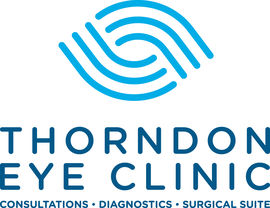Hutt, Wellington > Private Hospitals & Specialists >
Thorndon Eye Clinic
Private Service, Ophthalmology
Today
8:00 AM to 5:00 PM.
Description
- Cataract and refractive lens surgery
- Retinal and macular surgery
- Glaucoma surgery
- Oculoplastic conditions
- Dry eye
We have an experienced and friendly team at Thorndon Eye Clinic. Our team members are:
Dr Steve Mackey - Ophthalmologist specialising in:
- Cataract and refractive lens surgery
- Macular and vitreoretinal surgery
- Pterygium surgery.
Steve graduated from Otago University and subsequently trained as a specialist ophthalmologist in Dunedin and Christchurch gaining FRANZCO. He carried out 3 further years of sub-specialty training in the UK which included cataract surgery and vitreoretinal surgery. He consults from Thorndon Eye Clinic, Boulcott Clinic, and in Paraparaumu.
Dr Nina Ashraff - Ophthalmologist specialising in:
- Glaucoma and cataract surgery.
Nina consults from Thorndon Eye Clinic and Boulcott Clinic.
- Oculoplastics
- Eyelid malposition, ptosis and dermatochalasis
- Periocular skin tumours
- Dry/watery eyes
- Thyroid eye disease
- Orbital disorders and socket reconstruction.
Kenneth consults from Thorndon Eye Clinic and Boulcott Clinic. He also consults at Wellington Hospital which is where he commenced his ophthalmology training. He has recently returned from his oculoplastic and orbital surgery fellowship in Newcastle-upon-Tyne in the United Kingdom. He has also completed a clinical observership in oculoplastic surgery and aesthetic medicine at Bascom Palmer Eye Institute in Miami, Florida. Kenneth is able to conduct his consultations in Cantonese and Mandarin if required.
Dr Neil Avery - Ophthalmologist specialising in:
- Cataract and refractive lens surgery
- Macular and vitreoretinal surgery
Raewyn Owen - Clinical Nurse Specialist
Raewyn has had 25 years eye experience working both in New Zealand and overseas. With over twelve years working in the Thorndon Eye Clinic, Raewyn is very experienced in dealing with all aspects of eye treatment.
Hana Havlik - Ophthalmic Theatre and Clinic Nurse
Hana joined Thorndon Eye Clinic in 2014. She has 15 years' experience working in operating theatres. She is now concentrating on ophthalmic theatre and clinic practice.
Wendy Franklin - Clinician Assistant
Wendy joined the team in mid 2014. She has had extensive overseas experience working in optometry in the capacity of a dispensing optician and contact lens fitter.
Ophthalmology is the branch of specialist medicine that is focused on the health of eyes and their surrounding tissues, including muscles, bones, eyelids, and tear production/drainage systems. Your eye is the organ of vision and consists of the cornea (the outer clear layer), the sclera (the white of the eye), the iris (the coloured part), the lens (lies behind the iris) and the retina (the light-sensitive lining at the back of the eye). Your eyes ‘see’ by focusing light that enters the eye onto the retina which sends the image to the brain by the optic nerve.
Consultants
-

Dr Nina Ashraff
Ophthalmologist
-

Dr Neil Avery
Ophthalmologist
-

Dr Kenneth Chan
Ophthamologist
-

Dr Steve Mackey
Ophthalmologist
How do I access this service?
Referral
Referral Expectations
Medical referrals or optometrist referrals - please phone us on (04) 499 4940, fax us on (04) 499 0242 or email us at . Insurance companies generally require us to have a referral letter from your GP or optometrist.
Self referrals, please phone us on (04) 499 4940 or email us at detailing your full name, date of birth, email address, phone number and reason for an appointment so we can offer an appointment with the correct specialist. Most insurance companies require us to have a referral letter from your GP or optometrist. We will contact you to make an appointment. Acute or emergency eye conditions should be referred to your GP or Wellington Public Hospital if this clinic is closed.
Fees and Charges Description
Your initial consultation will cost $247.00
Follow up consultations are $168.00
Often diagnostic tests are needed. The cost of tests is additional to the prices above.
The cost of any procedures or treatments that may be required will be discussed with you at the time of your appointment.
Hours
8:00 AM to 5:00 PM.
| Mon – Fri | 8:00 AM – 5:00 PM |
|---|
To book an appointment, contact us 8.00am - 5.00pm Monday to Friday. We are closed on public holidays and during the Christmas period.
We hold clinics at different times during the week at our three locations.
Dr Mackey's clinics are usually:
- Paraparaumu - Tuesday
- Boulcott Clinic - Thursday and some Mondays
- Thorndon Clinic - Wednesday and Friday
Dr Ashraff's clinics are usually:
- Thorndon Clinic - Monday, Tuesday and some Thursdays and Fridays
- Boulcott Clinic - one Thursday per month, she has a clinic at Boulcott
Dr Chan's clinics are usually:
- Thorndon Clinic - Monday, Tuesday, Wednesday afternoon and Thursday
- Boulcott Clinic - Wednesday morning
- Paraparaumu - one Tuesday per month
Dr Avery's clinics are usually:
- Thorndon Clinic - Monday, Wednesday and Thursday afternoons
- Boulcott Clinic - alternate Wednesdays
- Paraparaumu - one Wednesday per month
Public Holidays: Closed ANZAC Day (25 Apr), King's Birthday (3 Jun), Matariki (28 Jun), Labour Day (28 Oct), Wellington Anniversary (20 Jan), Waitangi Day (6 Feb), Good Friday (18 Apr), Easter Sunday (20 Apr), Easter Monday (21 Apr).
Languages Spoken
English, Mandarin Chinese, Cantonese Chinese, Czech, Malay
Common Conditions
These conditions cause distance blur. In myopia, the eye has a resting focus at a near distance so that people will be able to see objects clearly at some point close to them, whilst the distance is blurry. Hyperopia also causes distance blur but often does not become noticeable until the eye loses its ability to change focus, frequently in middle age. The loss of focus for near distance (presbyopia or “aged sight”) is also related to a decreased ability to change focus but only affects reading. Astigmatism causes an image to be blurry at all distances, but does not affect clarity of images unless it is severe. An optometrist or ophthalmologist can test for these conditions. Treatment is usually glasses or contact lenses which are only obtainable through an optometrist or dispensing optician. Laser surgery and other corrective surgical techniques can also be used to change the focus of the eye to give clarity of sight in suitable patients.
These conditions cause distance blur. In myopia, the eye has a resting focus at a near distance so that people will be able to see objects clearly at some point close to them, whilst the distance is blurry. Hyperopia also causes distance blur but often does not become noticeable until the eye loses its ability to change focus, frequently in middle age. The loss of focus for near distance (presbyopia or “aged sight”) is also related to a decreased ability to change focus but only affects reading. Astigmatism causes an image to be blurry at all distances, but does not affect clarity of images unless it is severe. An optometrist or ophthalmologist can test for these conditions. Treatment is usually glasses or contact lenses which are only obtainable through an optometrist or dispensing optician. Laser surgery and other corrective surgical techniques can also be used to change the focus of the eye to give clarity of sight in suitable patients.
These conditions cause distance blur. In myopia, the eye has a resting focus at a near distance so that people will be able to see objects clearly at some point close to them, whilst the distance is blurry. Hyperopia also causes distance blur but often does not become noticeable until the eye loses its ability to change focus, frequently in middle age. The loss of focus for near distance (presbyopia or “aged sight”) is also related to a decreased ability to change focus but only affects reading. Astigmatism causes an image to be blurry at all distances, but does not affect clarity of images unless it is severe. An optometrist or ophthalmologist can test for these conditions. Treatment is usually glasses or contact lenses which are only obtainable through an optometrist or dispensing optician. Laser surgery and other corrective surgical techniques can also be used to change the focus of the eye to give clarity of sight in suitable patients.
Cataracts are the most common age-related occurrence in eyes. The lens becomes thicker and stiffer and appears yellow and cloudy. Eventually it may turn white, changing the colour of the pupil. A cataract may cause your vision to become fuzzy in a progressive fashion and may also be the cause of disabling glare. Once a cataract affects vision too much, a cataract removal operation is generally advised. This decision is usually made in consultation with an eye specialist. The operation is almost always done under local anaesthetic. Once the cataract has been removed an artificial lens is put in to replace it. It is relatively short in duration and an overnight stay in hospital is not required. Post-operative care consists of eye drops and a check at 1-2 days then after 2-4 weeks.
Cataracts are the most common age-related occurrence in eyes. The lens becomes thicker and stiffer and appears yellow and cloudy. Eventually it may turn white, changing the colour of the pupil. A cataract may cause your vision to become fuzzy in a progressive fashion and may also be the cause of disabling glare. Once a cataract affects vision too much, a cataract removal operation is generally advised. This decision is usually made in consultation with an eye specialist. The operation is almost always done under local anaesthetic. Once the cataract has been removed an artificial lens is put in to replace it. It is relatively short in duration and an overnight stay in hospital is not required. Post-operative care consists of eye drops and a check at 1-2 days then after 2-4 weeks.
A weakness in one or more of the muscles of the eye will cause the eye to turn or move away from the normal focusing position. This is commonly known as a squint. A squint can be corrected by surgery, or by using glasses. Rarely, children may grow out of a squint. Surgical correction of squint usually involves a general anaesthetic. In the procedure, the muscles involved are repositioned to correct the alignment. It is important to recognise and treat a squint as, if left uncorrected, it can result in permanent impairment of vision.
A weakness in one or more of the muscles of the eye will cause the eye to turn or move away from the normal focusing position. This is commonly known as a squint. A squint can be corrected by surgery, or by using glasses. Rarely, children may grow out of a squint. Surgical correction of squint usually involves a general anaesthetic. In the procedure, the muscles involved are repositioned to correct the alignment. It is important to recognise and treat a squint as, if left uncorrected, it can result in permanent impairment of vision.
Glaucoma is a group of diseases that can damage the eye’s optic nerve and may result in vision loss and blindness. Multiple factors are often important in causing glaucoma, but it is most commonly related to in an increase in pressure in the eye. Symptoms are generally absent until the condition has progressed to an advanced stage. Very occasionally, a rarer form of glaucoma can develop suddenly and symptoms may then include: headaches and aches around the affected eye, seeing halos around lights, sensitivity to light, blurred vision, nausea and vomiting. You may be more likely to develop glaucoma if you: have someone else in your family with glaucoma already have high pressure in your eye have experienced injury to your eye have or have had certain other eye problems have migraine or circulation problems. Glaucoma is more common in people over 50 years of age and more common in women than men. Diagnosis usually comes after consultation with an eye doctor. Signs of glaucoma may also be picked up at an optometrist’s eye examination. The following tests are used to diagnose and monitor glaucoma: Tonometry – measures eye pressure. It is often the first screening test for glaucoma. The eyes are numbed with eye drops and then examined. Dilated eye exam - this is done with an ophthalmoscope (which is a medical instrument that allows the doctor to look through the pupil to the back of the eye).The retina and optic nerve are then examined for any sign of damage. Visual acuity test – test to check distance vision using an eye chart. Visual field test – test to measure side (peripheral) vision. Pachymetry – test to measure the thickness of the cornea. Many other new techniques are emerging to help identify the likelihood of glaucoma and help determine its rate of worsening. Although glaucoma cannot be cured, early treatment can prevent further worsening of the condition and vision loss. Regular eye examinations will need to be continued life-long. Eye drops to decrease eye pressure are the most common early treatment. Surgery may be required, especially if medications are not taking adequate effect. Laser trabeculoplasty, in which a surgeon uses a laser to help the fluid drain from the eye, may be considered in some cases, but has limited effectiveness. More commonly, a trabeculectomy may be performed when other methods have failed to adequately control pressure. This is a medium length operation that makes a new opening for fluid to drain from the eye.
Glaucoma is a group of diseases that can damage the eye’s optic nerve and may result in vision loss and blindness. Multiple factors are often important in causing glaucoma, but it is most commonly related to in an increase in pressure in the eye. Symptoms are generally absent until the condition has progressed to an advanced stage. Very occasionally, a rarer form of glaucoma can develop suddenly and symptoms may then include: headaches and aches around the affected eye, seeing halos around lights, sensitivity to light, blurred vision, nausea and vomiting. You may be more likely to develop glaucoma if you: have someone else in your family with glaucoma already have high pressure in your eye have experienced injury to your eye have or have had certain other eye problems have migraine or circulation problems. Glaucoma is more common in people over 50 years of age and more common in women than men. Diagnosis usually comes after consultation with an eye doctor. Signs of glaucoma may also be picked up at an optometrist’s eye examination. The following tests are used to diagnose and monitor glaucoma: Tonometry – measures eye pressure. It is often the first screening test for glaucoma. The eyes are numbed with eye drops and then examined. Dilated eye exam - this is done with an ophthalmoscope (which is a medical instrument that allows the doctor to look through the pupil to the back of the eye).The retina and optic nerve are then examined for any sign of damage. Visual acuity test – test to check distance vision using an eye chart. Visual field test – test to measure side (peripheral) vision. Pachymetry – test to measure the thickness of the cornea. Many other new techniques are emerging to help identify the likelihood of glaucoma and help determine its rate of worsening. Although glaucoma cannot be cured, early treatment can prevent further worsening of the condition and vision loss. Regular eye examinations will need to be continued life-long. Eye drops to decrease eye pressure are the most common early treatment. Surgery may be required, especially if medications are not taking adequate effect. Laser trabeculoplasty, in which a surgeon uses a laser to help the fluid drain from the eye, may be considered in some cases, but has limited effectiveness. More commonly, a trabeculectomy may be performed when other methods have failed to adequately control pressure. This is a medium length operation that makes a new opening for fluid to drain from the eye.
- have someone else in your family with glaucoma
- already have high pressure in your eye
- have experienced injury to your eye
- have or have had certain other eye problems
- have migraine or circulation problems.
- Tonometry – measures eye pressure. It is often the first screening test for glaucoma. The eyes are numbed with eye drops and then examined.
- Dilated eye exam - this is done with an ophthalmoscope (which is a medical instrument that allows the doctor to look through the pupil to the back of the eye).The retina and optic nerve are then examined for any sign of damage.
- Visual acuity test – test to check distance vision using an eye chart.
- Visual field test – test to measure side (peripheral) vision.
- Pachymetry – test to measure the thickness of the cornea.
This is a complication of diabetes and is caused by small blood vessel damage within the retina of the eye. It commonly affects both eyes and may cause permanent loss of vision. Macular oedema is sometimes also present with diabetic retinopathy. Macular oedema is when fluid leaks into the retina and causes swelling and blurred vision. This may occur at any stage of diabetic retinopathy, but is more common as the disease progresses. There are often no symptoms in the early stages but as the condition progresses vision may begin to become impaired. Often visual loss may be sudden and without warning. This is why it is imperative that at-risk diabetics have frequent eye checks. Poorly controlled diabetes and pregnancy in diabetes are risk factors for developing this condition. Often, first-stage diabetic retinopathy requires no active treatment on the eye but requires stabilisation of diabetes and regular eye examinations. With progressive retinopathy, a laser treatment called the PRP laser can be used. This works by shrinking enlarged blood vessels to prevent further bleeding into the retina. Severe bleeding may require a surgical procedure called a vitrectomy, where blood is surgically removed from the eye. Treatment of macular oedema, if present, is by focal laser treatment. Vision is stabilised by reducing the degree of fluid leakage into the retina. Often more than one treatment is required.
This is a complication of diabetes and is caused by small blood vessel damage within the retina of the eye. It commonly affects both eyes and may cause permanent loss of vision. Macular oedema is sometimes also present with diabetic retinopathy. Macular oedema is when fluid leaks into the retina and causes swelling and blurred vision. This may occur at any stage of diabetic retinopathy, but is more common as the disease progresses. There are often no symptoms in the early stages but as the condition progresses vision may begin to become impaired. Often visual loss may be sudden and without warning. This is why it is imperative that at-risk diabetics have frequent eye checks. Poorly controlled diabetes and pregnancy in diabetes are risk factors for developing this condition. Often, first-stage diabetic retinopathy requires no active treatment on the eye but requires stabilisation of diabetes and regular eye examinations. With progressive retinopathy, a laser treatment called the PRP laser can be used. This works by shrinking enlarged blood vessels to prevent further bleeding into the retina. Severe bleeding may require a surgical procedure called a vitrectomy, where blood is surgically removed from the eye. Treatment of macular oedema, if present, is by focal laser treatment. Vision is stabilised by reducing the degree of fluid leakage into the retina. Often more than one treatment is required.
This is when the retina detaches, meaning it is lifted or separated from its normal position within the eye. An acute retinal detachment requires urgent assessment and appropriate treatment. Unless prompt and effective treatment is given, some forms of retinal detachment may lead to irreversible blindness. Signs and symptoms include: a sudden or gradual increase in floaters, deterioration in vision, cobwebs or specks with the visual field, light flashes in the eye or the appearance of curtains over the visual field. You are more likely to have a retinal detachment if you are very short-sighted or have had an injury or previous surgery to the eye. For minor detachments, a laser or freeze treatment (cryopexy) are used. Both therapies re-attach the retina. For major detachment, surgery will be necessary. A band is often put around the back of the eye to prevent further detachment. Surgical treatment is usually a vitrectomy, where the jelly (vitreous) is removed from the eye. This often involves a hospital stay. It can take several months post-surgery to see the final visual result.
This is when the retina detaches, meaning it is lifted or separated from its normal position within the eye. An acute retinal detachment requires urgent assessment and appropriate treatment. Unless prompt and effective treatment is given, some forms of retinal detachment may lead to irreversible blindness. Signs and symptoms include: a sudden or gradual increase in floaters, deterioration in vision, cobwebs or specks with the visual field, light flashes in the eye or the appearance of curtains over the visual field. You are more likely to have a retinal detachment if you are very short-sighted or have had an injury or previous surgery to the eye. For minor detachments, a laser or freeze treatment (cryopexy) are used. Both therapies re-attach the retina. For major detachment, surgery will be necessary. A band is often put around the back of the eye to prevent further detachment. Surgical treatment is usually a vitrectomy, where the jelly (vitreous) is removed from the eye. This often involves a hospital stay. It can take several months post-surgery to see the final visual result.
Parking
Parking is not usually a problem as there are metered car parks on the adjacent streets. There is also a very convenient no parking area outside our door where you may be dropped off or picked up by friends and relatives.
Website
Contact Details
230 Thorndon Quay, Wellington
Wellington
8:00 AM to 5:00 PM.
-
Phone
(04) 499 4940
Healthlink EDI
wellieye
Email
Website
Boulcott Specialist Centre, 666 High Street, Lower Hutt
Hutt
8:00 AM to 5:00 PM.
-
Phone
(04) 499 4940
Healthlink EDI
wellieye
Email
Website
Coastlands Mall, 148 Rimu Road, Paraparaumu
Wellington
8:00 AM to 5:00 PM.
-
Phone
(04) 499 4940
Healthlink EDI
wellieye
Email
Website
Was this page helpful?
This page was last updated at 2:34PM on February 13, 2024. This information is reviewed and edited by Thorndon Eye Clinic.

